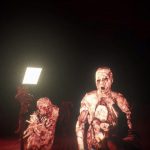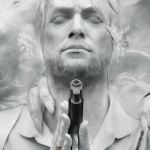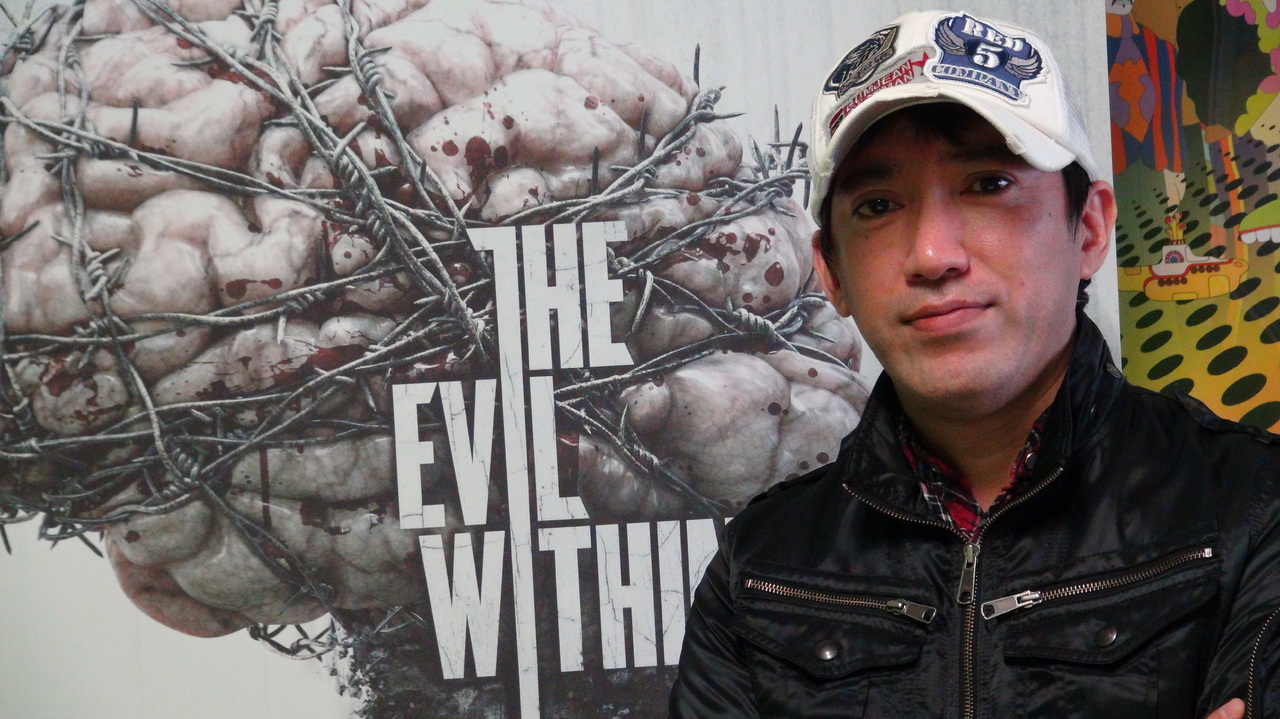Recently, we got to talk to the Godfather of horror games, Shin Mikami about his role in The Evil Within 2 as well as some of his classic games that date back to earlier in his career. We also got down to the nitty gritty about The Evil Within 2 with Director, John Johanas.
Despite stepping away from the directorial chair, is The Evil Within 2 still very much a Shinji Mikami game?
SM: Maybe John’s style is the most obvious in the work as he’s the main director. My role in The Evil Within 2 was to use my experience I have from beforehand to give advice to John.
So Sebastian’s focus in the sequel is to return to STEM and rescue the daughter he thought he’d lost. Has it been rewarding making Sebastian a more vulnerable character, perhaps making him more relatable to players?
JJ: Well this time I think having the story be set around Sebastian, his plot and his attempt to get his daughter back definitely helps with making the game more relatable. Because you get to work off that original game there wasn’t anything personal about and add a more personal story to it.
Some might not know that Shinji Mikami got his start with Disney games at the start of his career. So first, thank you for Aladdin, that game was my childhood. Second, what did you learn then that has resonated with you throughout your career?
SM: I was fond of making Disney games, but because I made three of them, I was inclined to explore that extreme opposite and make Resident Evil.

Where do your ideas come from for the imagery in these games?
SM: Movies definitely play a big role in inspiring me.
So The Evil Within 2 still has a lot of that linear progression the first game had, but it also opens up into objective-rich sandbox areas at other points. Can you elaborate on that?
JJ: So this time around we do have those linear segments that made the first game so well known for its horror elements, but we also have stages, which you can see in the demo, where levels really open up. We give you that freedom to explore and do as you will. Gather resources, or to complete smaller objectives or search for items and weapons you might need to progress. But we don’t really force you to do this, it’s mostly all optional content and you can play the game at your own pace.
How has it been taking more supervision based role with The Evil Within 2, is there still the itch to direct games for you?
SM: Yeah, it’s there. So he comes up with the original idea but I give advice and give feedback, then we work out how best to go forward.
And how has it been for you, working with Shinji Mikami?
JJ: Uh, it’s been good. (laughs) Yeah, making games is a collaborative effort, so it doesn’t just come from one person. We both bring ideas and talk it through. There are some things that I think are great which don’t work out in the scheme of things, we talk it over. He suggests to maybe try it like this, and vice versa, there’s a lot of compromises.

One criticism some might have had about The Evil Within was that its plot might have been a tad convoluted and confusing. Has the sequel taken any steps to make the sequel more accessible?
SM: The backbone of this story is actually very simple because Sebastian has to go back to this world and find his daughter and rescue her, so that’s very straight forward. But the STEM story, and its complexities, sort of branch off but it always keeps relating back to this basic plot.
Between the two of you, you’ve created a lot of horrific imagery that has scared generations of gamers. What scares you?
SM: My wife, maybe. (laughs)
JJ: So uh, I’m still afraid of the dark. So I try not to work too late.
What does it mean to be revered as a legend of the industry, to be held up with names like Iwata, Miyamoto and Kojima?
SM: Miyamoto is my God, so I don’t think I can accept that comparison.



